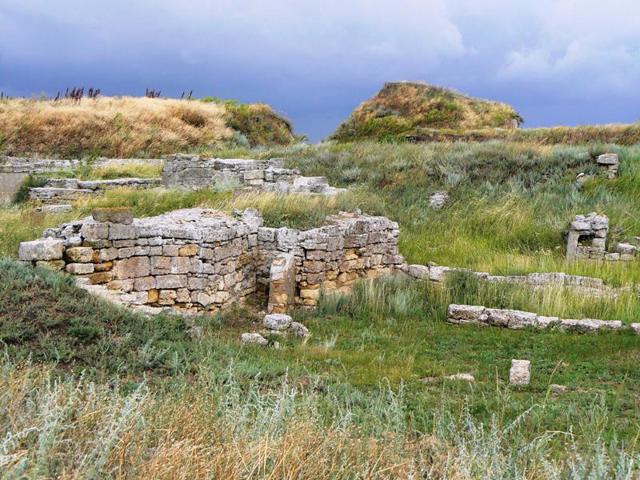Functional temporarily unavailable
General information about Parutyne
The village of Parutyne is located on the right bank of the Bugsky estuary, 40 km from Nikolaev. Founded in 1787 by Nekrasiv Old Believers. It was in the possession of Count I. Bezborodko, Ilyinske was called in his honor. Back in those days, the ruins of the ancient Greek city of Olbia were discovered nearby, and the village itself turned out to be on the site of the Olbia necropolis. The peasants used the Olbian stone for their buildings up to the middle. XX century. Only in 1900, systematic archaeological research began on the territory of Olbia. Many highly artistic works of art were found, which are now exhibited in many museums around the world. Since 1926, the territory has been under the protection of the Olvia Historical and Archaeological Reserve. The tourist infrastructure in ...
The village of Parutyne is located on the right bank of the Bugsky estuary, 40 km from Nikolaev. Founded in 1787 by Nekrasiv Old Believers. It was in the possession of Count I. Bezborodko, Ilyinske was called in his honor. Back in those days, the ruins of the ancient Greek city of Olbia were discovered nearby, and the village itself turned out to be on the site of the Olbia necropolis. The peasants used the Olbian stone for their buildings up to the middle. XX century. Only in 1900, systematic archaeological research began on the territory of Olbia. Many highly artistic works of art were found, which are now exhibited in many museums around the world. Since 1926, the territory has been under the protection of the Olvia Historical and Archaeological Reserve. The tourist infrastructure in Parutyne is poorly developed.
Село Парутине розташоване на правому березі Бузького лиману, в 40 км від Миколаєва. Засноване в 1787 році старовірами-некрасівцями. Знаходилося у володінні графа І. Безбородька, на його честь називалося Іллінське. Ще в ті часи неподалік були виявлені руїни давньогрецького поліса Ольвія, а саме село виявилося на місці ольвійського некрополя. Селяни використовували ольвійський камінь для своїх будівель аж до середини XX ст. Тільки в 1900 році почалися систематичні археологічні дослідження на території Ольвії. Знайдено безліч високохудожніх творів мистецтва, які експонуються зараз у багатьох музеях світу. З 1926 року територія знаходиться під охороною історико-археологічного заповідника "Ольвія". Туристична інфраструктура в Парутине розвинена слабо.
Сплануй своє перебування у Parutyne
What to see and where to go in Parutyne
Tourist attractions and museums of Parutyne

Olvia Reserve
Historic area , Museum / gallery , Archaeological site
The ruins of the ancient Greek city of Olbia are located on the southern outskirts of the village of Parutine, on the shores of the Bug estuary. Olbia of Pontus was one of the four largest ancient polises in the northern Black Sea coast, having existed for a millennium - from the VI century. B.C. to the IV century. not. It was founded by settlers from Miletus, the transshipment point for which was the island of Borisfen (Berezan). Mentioned in & quot; History & quot; Herodotus. It reached its peak in the Hellenic period (before the first century AD), then was a Roman province, until it disappeared under the pressure of the Huns. The main altar (temenos), the central square (agora), the foundations of temples and houses, the crypts of the nobles, fragments of the citadel, defensive walls and gates, roads, etc. were found. The search for the ruins of the ancient theater, which probably lies at the bottom of the estuary, continues. In 1926, the excavation area was declared a state reserve. Today it is the National Historical and Archaeological Reserve & quot; Olbia & quot ;. A museum has been opened in the old lighthouse, where the finds made during the excavations are presented. The dungeon of the ancient crypt is available for inspection. A lapidary was also opened, which presents ancient tombstones and fragments of ancient architecture. The & quot; Muse of Olbia & quot; festival is held every year in the 20s of August.
Reviews Parutyne
Geographical information about Parutyne
| {{itemKey}} | {{itemValue}} |
|---|---|
| Region |
Mykolaiv |


